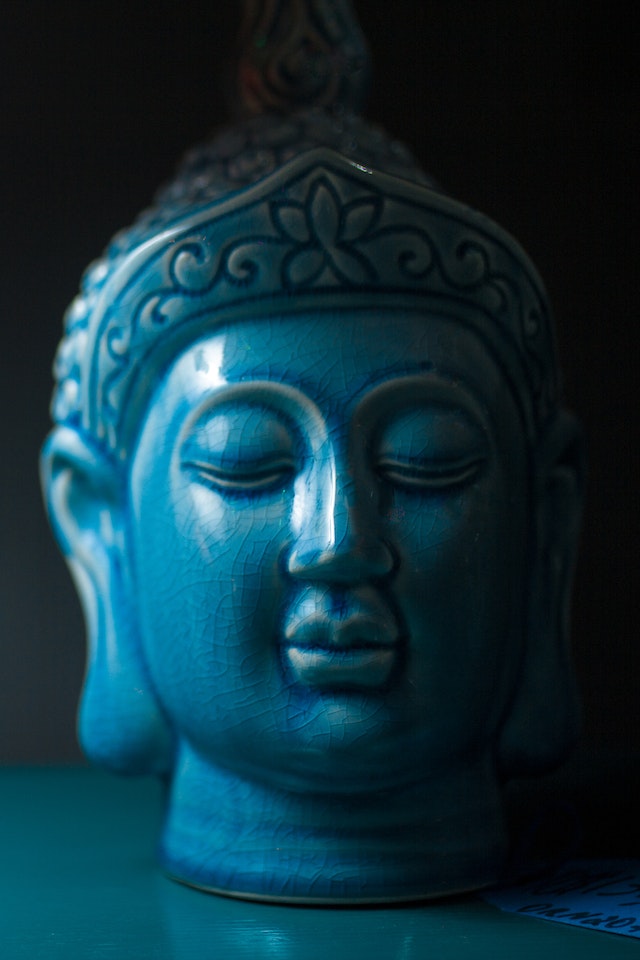Blue, the secondary color of tranquility and calmness, holds a special place in our lives. It has been a part of human history for centuries, symbolizing various meanings across different cultures and industries.

Blue, with its vast array of hues, holds deep symbolism in the realm of color theory. The color blue is often associated with tranquility, serenity, and peace. It is believed to have a calming effect on the mind and body, promoting a sense of relaxation and inner harmony. In many cultures, blue is also associated with good luck and protection against evil. This symbolic power of blue extends to various aspects of life, including spirituality, emotions, and communication.
Furthermore, while blue is traditionally seen as a cool color, it can also evoke warmth when used in certain contexts, such as vibrant turquoise or aquamarine tones. Ultimately, the blue color holds a rich symbolism that transcends cultures and time, representing a harmonious blend of tranquility, protection, and even a touch of good fortune.
The History of Blue
Blue holds a rich history as a symbol, representing concepts such as calmness, loyalty, and spirituality. Throughout various cultures and time periods, this color has played a significant role. In ancient civilizations, blue pigments were highly prized due to their rarity, often reserved exclusively for royalty or religious purposes.

In Western cultures, blue is associated with trust and stability, while in Eastern cultures, it can symbolize immortality or healing. Additionally, blue is frequently utilized in branding and advertising to convey reliability and professionalism. The world of art and design has witnessed the evolution of different shades and tones of cobalt blue, each with its own unique set of emotions and themes.
Blue Personality Type


The blue personality type is characterized by their inclination towards the color blue and the associated symbolism it carries. Blue represents various emotions and traits, including calmness, tranquility, and serenity. People who prefer blue are often perceived as trustworthy and dependable individuals. While blue can also be associated with feelings of sadness or melancholy, it is commonly used in branding to convey a sense of trust and reliability.
Different shades of blue evoke distinct emotions, with light blue representing serenity and dark blue symbolizing authority and power. With its calming and dependable nature, the color of the sky, the blue personality type is often admired for their steadfastness and reliability.
Blue in Fashion


Blue is a captivating color that holds a profound meaning in the world of fashion. Its association with sincerity and trustworthiness makes it a favorite choice among fashion enthusiasts. Whether it’s a vibrant azure or a subdued navy, blue has the power to evoke a sense of calmness and tranquility. Warm colors of blue, such as turquoise or cerulean, can add a refreshing touch to any outfit, while deeper indigo and navy hues exude sophistication and elegance.
Darker shades of blue are often embraced for their versatility, seamlessly complementing a wide range of skin tones and creating a timeless appeal. Blue has truly become a staple in the fashion industry, embodying both a sense of serenity and a touch of mystery within its shades.
Blue in Business
Blue is a color that holds great significance in the realm of business. It is widely associated with trust, reliability, professionalism, and calmness, making it a popular choice for corporate logos and branding. The calming and soothing properties of blue also make it an ideal color for healthcare organizations, creating an atmosphere of serenity, healing, and tranquility. Different shades of blue, including dark blue and light blue, can evoke various emotions and have different connotations in different business settings.

Understanding the psychology and symbolism behind the color blue can help businesses effectively utilize it in their marketing and branding strategies, fostering a sense of trustworthiness, dependability, and professionalism. Blue is also known to be an effective appetite suppressant.
Blue in Nature
Blue is not just a color, but a symbol of calmness, tranquility, and serenity in nature. From the lightest shade of blue to the darkest navy, the color portrays different emotions and meanings. Its presence can be found in bodies of water, like lakes and oceans, as well as in the vibrant blue flowers that bloom in various landscapes.

In China, bright blue symbolizes trust and wisdom, while in India, it can represent sadness and mourning. Blue is also associated with healing and spirituality, signifying purity and cleanliness. This cool color is often used to create a sense of relaxation and tranquility, making it a popular choice for blue rooms. Its unwavering presence also conveys a sense of dependability and trustworthiness.
Blue in Web Design
Blue is widely utilized in web design due to its symbolism, association with trustworthiness, and professionalism. It is a popular hue employed by various social media platforms, showcasing its calming effects and enhancing its overall appeal. Different shades of blue, including light blue and dark blue, offer designers the ability to create distinct moods and atmospheres.
In sectors like healthcare and finance, blue has become synonymous with dependability and expertise. By carefully considering color psychology and incorporating various shades of blue, web designers can effectively evoke feelings of calmness, tranquility, and trust, ensuring an engaging user experience.
Blue in Marketing


Blue, with its symbolism of trust, reliability, and professionalism, is a popular choice in the world of marketing. Many corporate brands opt for blue as their primary color to evoke a sense of dependability and integrity. This versatile hue not only conveys a feeling of calm and tranquility but also appeals to customers in industries like healthcare or wellness, emphasizing their commitment to serenity and healing.
With various shades of blue available, lighter tones offer a calming effect, while darker variants portray stability and strength. Tech companies favor blue in their logos and marketing materials, showcasing their innovative edge and expertise.
Blue Random Facts
Universally associated with calmness, tranquility, and reliability, blue is a color that symbolizes trust, loyalty, and confidence. From promoting relaxation and sleep in bedrooms to being used in branding for its sense of professionalism and security, blue has a calming effect on people’s emotions and even lowers blood pressure. This hue is also linked to wisdom and intelligence in various cultures. With its wide-ranging influence, blue is a versatile color that permeates multiple aspects of our lives.
Blue in Different Cultures
In different cultures, the color blue holds various symbolic meanings. It is associated with feelings of calmness, tranquility, and stability in Western cultures. In Eastern cultures, blue represents immortality, spirituality, and protection. African cultures associate blue with the sky, symbolizing hope and positivity. Blue is also commonly used to represent trustworthiness and reliability in business and branding. Different shades of blue convey different meanings; for example, navy blue represents authority and power, while light blue symbolizes innocence and purity.
What Does the Color Blue Mean in the Bible?

In biblical symbolism, the color blue represents divinity, truth, faithfulness, and loyalty. It is associated with the presence of God and signifies purity, holiness, and spiritual authority.
In the Bible, the color blue holds symbolic significance and is often associated with various meanings. While the Bible does not explicitly mention blue as the “favorite color,” it does provide clues about its significance. From a color psychology perspective, blue is often associated with feelings of calmness, tranquility, and trustworthiness. In the Bible, the color blue is frequently linked to qualities such as honesty and integrity.
Additionally, blue is believed to symbolize intuition and spiritual insight. For example, in the book of Numbers, the Israelites were instructed to wear blue tassels on the corners of their garments to remind them of God’s commandments and to follow their intuition in obeying them. Overall, the color blue in the Bible represents qualities like honesty, intuition, and a connection to the divine.
More Shades of Blue
Blue is a mesmerizing color that holds great symbolism and meaning. It is often associated with calmness, serenity, and tranquility in our lives. Different shades of blue have the ability to evoke unique emotions and convey distinct messages. Light blue, for instance, represents clarity, purity, and a sense of freshness. Dark blue, on the other hand, exudes depth, stability, and professionalism.
The color blue is widely used to symbolize water and the sky, reflecting the concepts of communication and trust. Whether it’s the calming hue of a clear sky or the powerful aura of navy blue, blue has a remarkable impact on our emotions and perceptions.
Conclusion
In conclusion, the color blue holds significant meaning and symbolism across various aspects of our lives. From its historical significance to its psychological impact, blue has a strong presence in fashion, business, nature, web design, marketing, and different cultures. Whether you’re exploring the calming effect of blue in your surroundings or incorporating it into your brand identity, understanding the deeper meanings and associations with this color can help you make informed decisions. So dive into our blog to uncover more intriguing facts about the color blue and how it can be used effectively in different contexts.


Leave a Reply